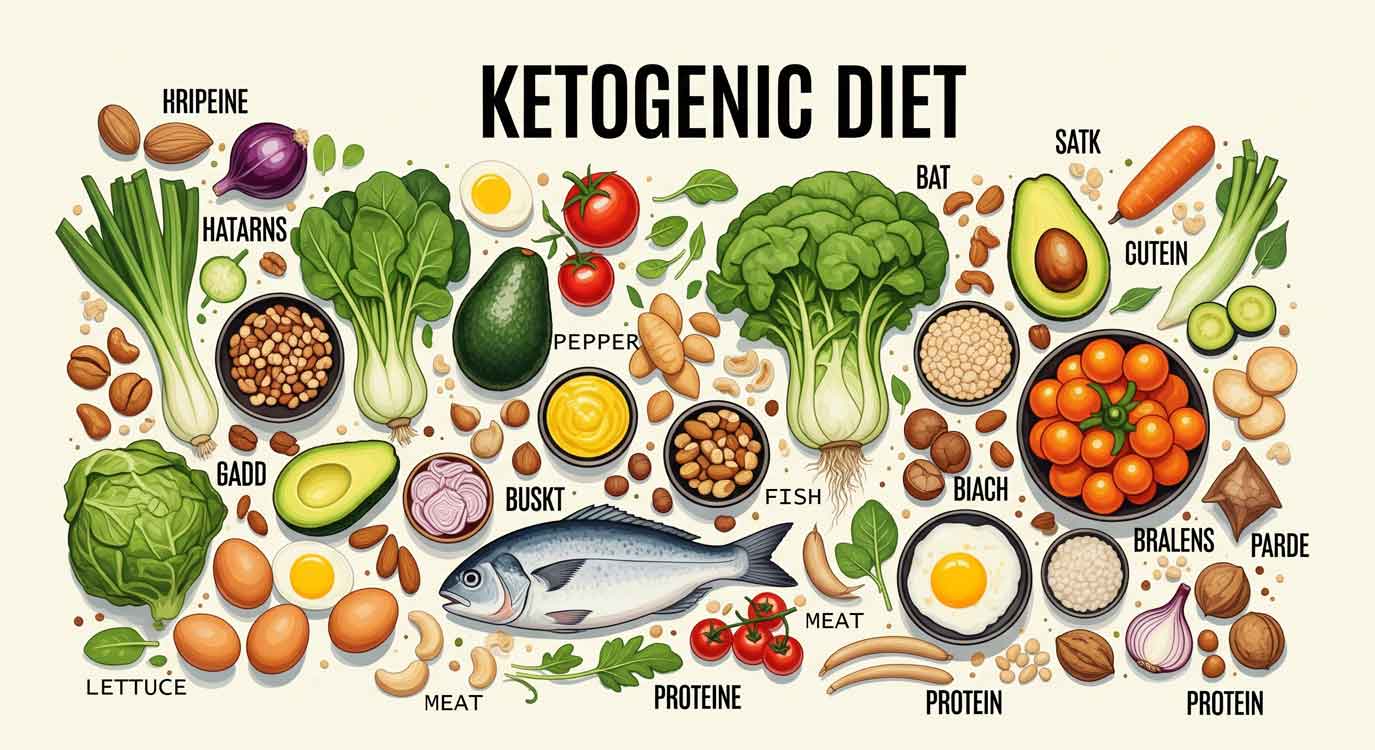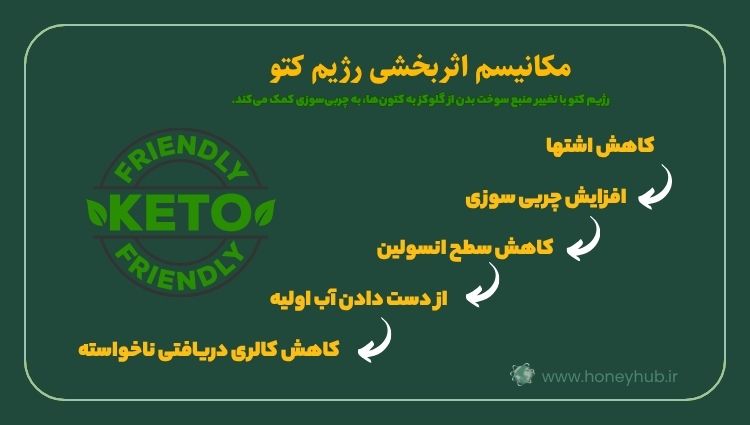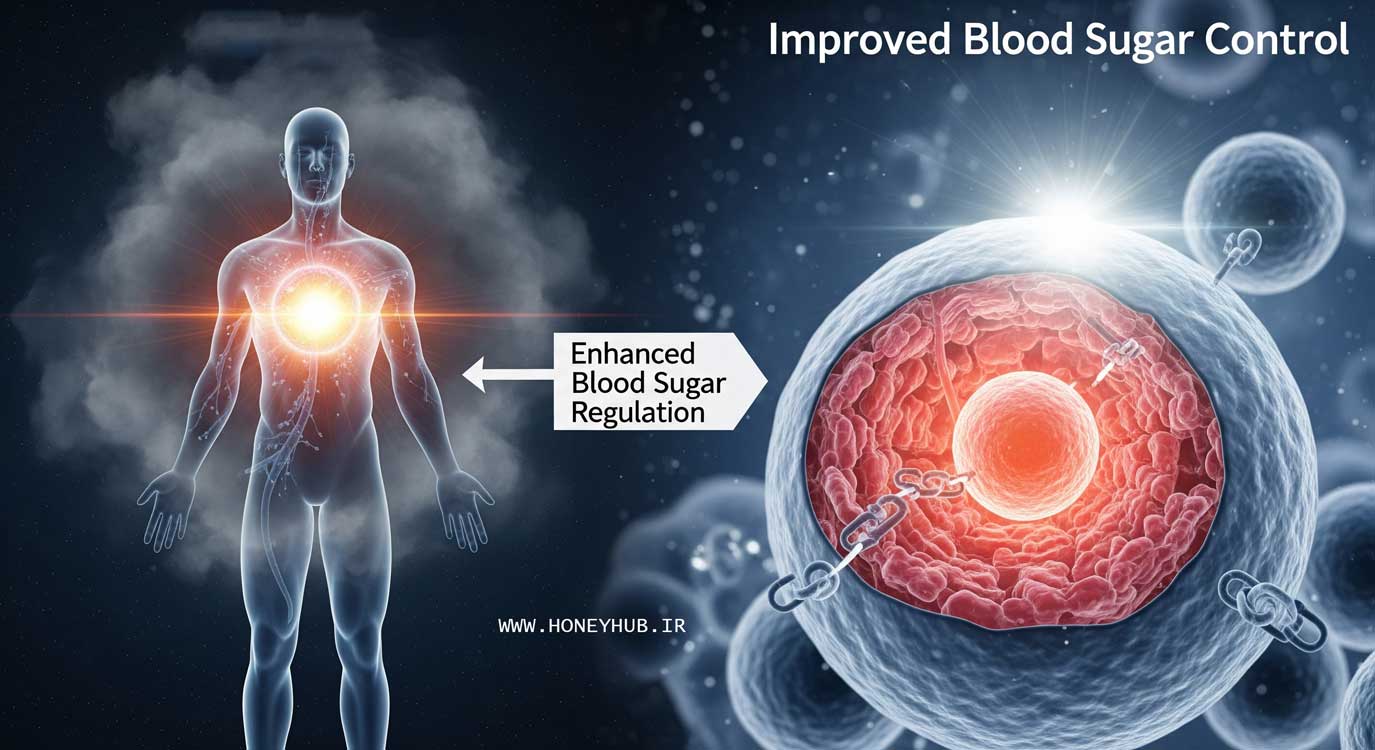Does your mozzarella refuse to stretch or just burn? The secret is science. From "pasta filata" to the crucial role...
What is the Ketogenic Diet? A Complete and Practical Guide to Weight Loss with Keto

The Ketogenic Diet or simply Keto, has become one of the most popular weight loss methods and health improvement strategies in recent years. This diet, which emphasizes high fat, moderate protein, and very low carbs, triggers a specific metabolic state called Ketosis. But what exactly is the ketogenic diet, how does it work, what are its benefits and drawbacks, and who is it suitable for? In this comprehensive and practical guide, we’ll answer all your questions and introduce you to the world of weight loss with the keto diet.
What is the Ketogenic Diet? A Scientific and Precise Definition
The Ketogenic Diet (Keto) is a dietary program in which carbohydrate intake is severely restricted (usually under 50 grams per day and sometimes as low as 20 grams), while the majority of calories come from fats (around 70-75%) and a moderate amount of protein (around 20-25%). The primary goal of this shift in macronutrient ratios is to bring the body into a state of Ketosis.
Normally, our bodies use glucose (sugar) derived from the breakdown of carbohydrates as the main source of energy. However, when carbohydrates are not available, the liver begins to break down fats into molecules called Ketones, which are then used as an alternative energy source for cells, including brain cells. This metabolic state, where fat becomes the primary fuel source, is called Ketosis.
Different Types of Ketogenic Diets
There are several versions of the ketogenic diet, including:
- Standard Ketogenic Diet (SKD): The most common type, consisting of 70% fat, 20% protein, and 10% carbs.
- Cyclical Ketogenic Diet (CKD): Involves periods of higher carb consumption, such as 5 days of keto and 2 days with high carbs. This type is often used by athletes and bodybuilders.
- Targeted Ketogenic Diet (TKD): Allows carb consumption around workout times.
- High-Protein Ketogenic Diet (HPKD): Similar to the standard version, but with more protein (e.g., 60% fat, 35% protein, 5% carbs).
In this guide, we will focus more on the Standard Ketogenic Diet (SKD).
The History of the Ketogenic Diet
You might find it interesting that the Ketogenic Diet is not a completely new phenomenon. It was first introduced in the 1920s as a therapeutic method for controlling seizures in children who didn’t respond to traditional medications. With the discovery of new anti-seizure drugs, the use of the keto diet for this purpose decreased. However, in recent decades, as research on its metabolic effects has increased, the ketogenic diet has regained popularity as a strategy for weight loss with keto and as a potential adjunctive treatment for several other conditions. For more information on the medical history of diets, check out research articles on PubMed Central.
How Does the Ketogenic Diet Aid in Weight Loss?

Several mechanisms contribute to the effectiveness of the Ketogenic Diet for weight loss:
- Appetite suppression: Fats and proteins are more satiating than carbohydrates. The higher fat and moderate protein intake in the keto diet helps reduce hunger, leading to lower calorie intake.
- Increased fat burning (lipolysis): In Ketosis, the body actively burns stored fat for energy.
- Lower insulin levels: The strict carb restriction leads to reduced insulin levels. Insulin plays a key role in fat storage, and lowering it can facilitate fat burning.
- Initial water loss: In the early days of the keto diet, weight loss occurs due to the depletion of glycogen stores (which are accompanied by water), which can provide motivation.
- Thermic effect of food (TEF): Protein digestion and metabolism burn more calories than carbs or fat. The moderate protein intake in the keto diet can help with this effect.
- Unintentional calorie restriction: By cutting out many processed, high-carb foods, people may naturally consume fewer calories.
To better understand how diets affect metabolism, check out our article on metabolism.
Benefits of the Ketogenic Diet Beyond Weight Loss
In addition to weight loss with keto, research has shown that the ketogenic diet may offer other health benefits, though further studies are needed to definitively confirm many of these claims:
- Improved blood sugar control: The keto diet can significantly lower blood sugar and insulin levels, which is beneficial for people with Type 2 diabetes or insulin resistance. (Source: American Diabetes Association)
- Neurological diseases: As mentioned, the ketogenic diet has been used for decades to treat drug-resistant epilepsy. Early promising research is also being conducted regarding its potential role in managing conditions like Alzheimer’s, Parkinson’s, and even some brain tumors.
- Polycystic Ovary Syndrome (PCOS): Some studies have shown that the keto diet may help improve metabolic and hormonal markers in women with PCOS.
- Heart health: The ketogenic diet can lead to improved cardiovascular risk factors, such as lowering triglycerides, increasing HDL (good cholesterol), and improving blood pressure. However, its effect on LDL (bad cholesterol) may vary between individuals and requires monitoring.
- Acne: Some people report improvements in acne while following the keto diet, possibly due to reduced sugar and processed food intake, as well as decreased inflammation.

What Foods Are Allowed and Not Allowed on the Ketogenic Diet?
One of the most important aspects of success in the keto diet is understanding the keto-friendly foods and avoiding the non-keto foods. Below is a helpful guide:
| Food Category | Keto-Friendly Foods | Non-Keto or Highly Restricted Foods |
|---|---|---|
| Healthy Fats | Extra virgin olive oil, coconut oil, avocado oil, butter, MCT oil, natural animal fats, high-fat nuts and seeds (almonds, walnuts, chia seeds, flaxseeds), avocado | Processed vegetable oils (sunflower, corn, soybean), margarine, trans fats |
| Proteins | Red meats (beef, lamb), poultry (especially fattier cuts), fatty fish (salmon, sardines, mackerel), whole eggs | Processed meats with added sugars or starches (certain sausages and deli meats) |
| High-Fat Dairy | Full-fat cheeses (cheddar, gouda, mozzarella, cream cheese), heavy cream, butter, Greek full-fat yogurt (in moderation) | Milk (due to high lactose), sweetened or low-fat yogurts, low-fat processed cheeses |
| Low-Carb Vegetables | Leafy greens (spinach, kale, lettuce), broccoli, cauliflower, asparagus, zucchini, bell peppers, cucumber, celery, mushrooms | Starchy vegetables (potatoes, sweet potatoes, corn, peas), carrots and beets (in large amounts) |
| Fruits | Berries in very small amounts (strawberries, blueberries, raspberries), avocado, lemons | Most fruits (bananas, apples, oranges, mangoes, grapes), fruit juices, dried fruits |
| Nuts and Seeds | Almonds, walnuts, pecans, macadamia nuts, chia seeds, flaxseeds, pumpkin seeds, sesame seeds (in moderation) | Cashews, pistachios (relatively higher in carbs), sweetened or coated nuts |
| Beverages | Water, unsweetened tea and coffee, herbal teas | Sugary sodas, store-bought fruit juices, sports drinks, flavored milk |
| Sweeteners | Stevia, erythritol, monk fruit – in moderation | White and brown sugar, honey, maple syrup, date syrup, agave, maltodextrin-based artificial sweeteners |
| Main Forbidden Foods | Bread, pasta, rice, breakfast cereals, cakes and pastries, sweetened chocolate, chips and crisps, high-carb fast food | - |
For a more complete list and keto recipes, check out our keto recipe section.
Sample One-Day Ketogenic Meal Plan
Below is a sample keto meal plan for one day. Remember, this is just an example, and portions should be adjusted according to your individual needs:
- Breakfast: Scrambled eggs (2-3) cooked in butter or coconut oil, with half an avocado and some bacon or keto-friendly sausage.
- Lunch: Chicken salad with full-fat mayonnaise and olive oil dressing, along with leafy greens and some walnuts.
- Dinner: Baked salmon with butter and sautéed asparagus in olive oil.
- Snack (if needed): A small handful of almonds, full-fat cheese, or a hard-boiled egg.
Potential Side Effects of the Keto Diet and How to Manage Them

Entering Ketosis can come with some temporary side effects, often referred to as "Keto Flu." These symptoms typically appear in the first week of starting the diet and resolve within a few days to a week. Common keto diet side effects include:
- Headache
- Fatigue and weakness
- Irritability
- Nausea
- Dizziness
- Difficulty concentrating
- Muscle cramps
- Sleep disturbances
How to Manage Keto Flu:
- Drink plenty of water: Staying hydrated is crucial.
- Replenish electrolytes: As carb intake is limited, the body excretes electrolytes like sodium, potassium, and magnesium. Consuming enough salt (sodium), potassium-rich foods (like avocado and spinach), and magnesium (nuts and seeds) or electrolyte supplements can help.
- Gradual introduction: Some people find that gradually reducing carbs instead of cutting them out abruptly results in fewer symptoms.
- Get plenty of rest.
Other potential long-term side effects (if the diet is not followed correctly) may include constipation (due to low fiber in some plans), bad breath (from ketone production), and in rare cases, nutrient deficiencies. Therefore, precise planning and consulting with a professional is essential.
Who Should Avoid the Ketogenic Diet?
The Ketogenic Diet is not suitable for everyone. The following individuals should avoid this diet or follow it only under strict medical supervision:
- Pregnant or breastfeeding women
- Individuals with pancreatic conditions (pancreatitis)
- Those with liver or kidney failure
- People with a history of gallstones or gallbladder removal (may have trouble digesting fats)
- Individuals with certain rare fat metabolism disorders
- People with a history of eating disorders
- Children and teenagers (unless prescribed by a doctor for specific conditions like epilepsy)
Always consult with a doctor or nutritionist before starting any restrictive diet like keto, especially if you have underlying health conditions or take medications. For more information on the safety of diets, visit the World Health Organization (WHO) website.
Important Tips for Success on the Ketogenic Diet
For the best results and long-term sustainability on the keto diet, keep the following tips in mind:
- Plan your meals: Plan your meals and snacks ahead of time to avoid unhealthy choices.
- Read food labels: Carefully check the carb, fat, and protein content of packaged foods. Watch out for hidden sugars.
- Hydration: Drink enough water.
- Manage electrolytes: Pay attention to sodium, potassium, and magnesium intake.
- Patience and consistency: Your body needs time to adjust to Ketosis. Weight loss may be rapid initially and then slow down.
- Track your macros: In the beginning, using an app to track your carbs, fats, and protein intake can be really helpful. (How to calculate your macros?)
- Choose healthy fats: Focus on monounsaturated and polyunsaturated fats (olive oil, avocado, nuts), and quality saturated fats (butter, coconut oil), while avoiding trans fats.
- Listen to your body: Pay attention to your body’s signals and adjust your plan as needed.
- Join a support group: Joining online groups or having a buddy can make the journey easier.





















Latest comments